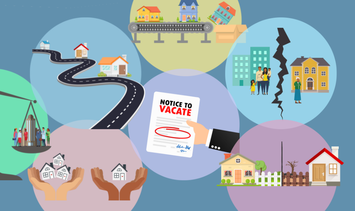
If you haven't read Part 1 yet, you can find it here.
Yonah Freemark, a senior research associate with the Urban Institute in Washington, DC, is someone I had the occasion of meeting a couple times in my career. A little more than ten years ago he worked for Chicago’s Metropolitan Planning Council, an independent nonprofit organization created in 1934. MPC’s mission then, and since, has been to challenge inequity and create stronger Chicago neighborhoods and communities. Freemark’s time there overlapped with my time at CMAP, Chicago’s federally recognized regional metropolitan planning organization. Our organizations routinely interacted with each other.
Freemark eventually left MPC and headed to MIT, where he would go on to earn a PhD in urban studies. While there Freemark completed a research paper in 2019 that examined the impact of upzoning on housing prices. Freemark was seeking to prove the hypothesis that an increase in housing supply would lead to lower housing prices.
The results didn’t quite turn out that way. His paper became notable because of one startling finding: “Chicago’s land-use reform–an upzoning of parcels near transit–produced a statistically significant rise in property values.”
Freemark, and many in the YIMBY community, were surprised by the results. Freemark is on record at X (formerly Twitter) that he neither “expected nor wanted this conclusion,” and offered several hedges: he limited his study to Chicago, and no other cities; he focused on property values and had no data on upzoning’s impact on rents; he hinted that the 5-year timeframe for analysis might not have been enough time to see actual upzoning affordability impacts. YIMBYs generally followed suit: as a city with negligible population growth for decades, Chicago might not have been the best city to study this phenomenon; the study period (2013-2018) came in the aftermath of the 2008 housing collapse and Great Recession; general affordability gains were made at the metro scale, not the neighborhood scale.
However, I expected this result. I touched on this subject as early as 2015, when I began to see urbanist consensus gather around upzoning as a policy panacea. My initial retort was that city conditions matter and need to be accounted for. What works for Silicon Valley, for example, might not work for Dallas, or Baltimore, or New York. But I now see it’s much more than that.
In the first part of this series, I noted that social and behavioral actions may better explain our nation’s affordable housing crisis than pure economics could. Seems economists are already working through a theory of what’s going on — expectations-driven explosive appreciation, or simply put, exuberance.
What is housing exuberance?
It’s pretty self-explanatory. It’s the excessive excitement that homeowners or property owners feel they are about to cash in on the biggest investment they’ve probably ever made. Exuberance is vastly underrated as an actor in the modern housing market.
Read the rest of this piece at Corner Side Yard Blog.
Pete Saunders is a writer and researcher whose work focuses on urbanism and public policy. Pete has been the editor/publisher of the Corner Side Yard, an urbanist blog, since 2012. Pete is also an urban affairs contributor to Forbes Magazine's online platform. Pete's writings have been published widely in traditional and internet media outlets, including the feature article in the December 2018 issue of Planning Magazine. Pete has more than twenty years' experience in planning, economic development, and community development, with stops in the public, private and non-profit sectors. He lives in Chicago.
Photo: courtesy Corner Side Yard Blog












